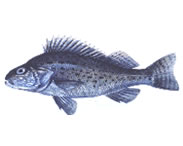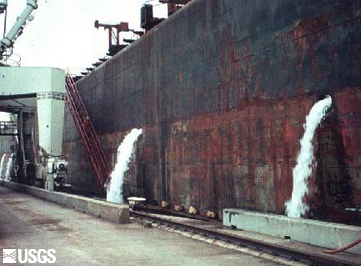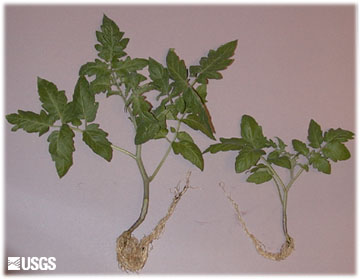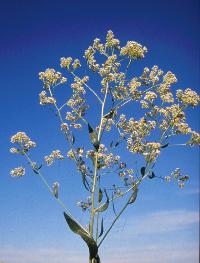- Home
- About S&T
- Taxa/Organisms
- Ecosystems
- Issues
- Methods & Tools
- Reports & Publications
- Location
- Search
September 2008 | Publisher: Other Federal Agency (United States Forest Service (USFS)) | Format: .PDF
www.fs.fed.us — This review of information on relationships between wildland fire and nonnative invasive plants can assist fire managers and other land managers concerned with prevention, detection, and eradication or control of nonnative invasive plants. The 16 chapters in this volume synthesize ecological and botanical principles regarding relationships between More...

July 31 2007 | Publisher: Other Federal Agency (Center for Coastal Monitoring and Assessment (CCMA)) | Format: URL
ccma.nos.noaa.gov — This website is the entry point to data for the Mussel Watch, Bioeffects, and Benthic Surveillance programs. This resource links to the National Status & Trends Program fact sheet (pdf), and several projects including Mussel Watch, Benthic Surveillance, and Bioeffects Assessment. Users can also get general information about the Center for More...

Publisher: USGS | Science Center: Upper Midwest Environmental Sciences Center (UMESC, LaCrosse) | Format: URL
www.umesc.usgs.gov — Eurasian Ruffe pose a threat to native fish because they(1) mature quickly, (2) have a high reproductive capacity, and (3) easily adapt to new environments. Ruffe were first detected in western Lake Superior in 1986. UMESC scientists are conducting research on various types of piscicides (chemicals that kill fish). They are attempting to develop More...

Publisher: USGS | Science Center: Western Fisheries Research Center (WFRC, Seattle) | Format: URL
wfrc.usgs.gov — Ballast water discharges are the most significant cause of aquatic biological invasions in coastal waters, including the Great Lakes. Currently, treatment of ballast water prior to discharge at the receiving port offers significant promise to help control this problem. However, development of treatment technologies is limited by lack of objective More...

Publisher: Other (National Invasive Species Information Center) | Format: URL
www.invasivespeciesinfo.gov — From the About NISIC. "The National Invasive Species Information Center (NISIC) was established in 2005 at the National Agricultural Library to meet the information needs of users including the National Invasive Species Council. ... NISIC creates and manages the www.invasivespeciesinfo.gov Web site. The Web site serves as a reference gateway to More...

Publisher: USGS | Science Center: Upper Midwest Environmental Sciences Center (UMESC, LaCrosse) | Format: URL
www.umesc.usgs.gov — Zebra mussels have caused drastic declines in native clam and mussel populations in some locations. Zebra mussels compete with other invertebrates and young fish for plankton, the primary food source for these groups. UMESC scientists are investigating the effects zebra mussels are having on the riverine ecosystem. This study examines the effects More...

Publisher: USGS | Science Center: Forest and Rangeland Ecosystem Science Center (FRESC, Corvallis) | Format: URL
fresc.usgs.gov — Periodic fire is a natural part of sagebrush steppe ecosystems in the Great Basin. However, a suite of human-caused factors has dramatically changed fire regimes in many of these systems. Decades of fire suppression and livestock grazing have produced dense, single-aged sagebrush stands and invasion by cheatgrass (Bromus tectorum) has increased More...

Publisher: USGS | Science Center: Western Fisheries Research Center (WFRC, Seattle) | Format: URL
wfrc.usgs.gov — The objective of this research is to determine if symbiotic fungi are responsible for the invasiveness of plants in non-native habitats. One of the least studied but critical aspects of plant community structure and dynamics involves symbiotic interactions with endophytic and mycorrhizal fungi. In the last several decades it has become apparent More...

Publisher: USGS | Science Center: National Wetlands Research Center (NWRC, Lafayette) | Format: URL
www.nwrc.usgs.gov — Cogongrass (Imperata cylindrica) is an agressive, perennial grass from Southeast Asia. Introduced into the United States on at least two separate occasions, this weed is currently invading Florida, Alabama, Mississippi, and Louisiana and has recently been discovered in East Texas. Cogongrass is considered one of the 10 worst weeds worldwide and is More...

Publisher: USGS | Science Center: Western Ecological Research Center (WERC, Sacramento) | Format: URL
www.werc.usgs.gov — This issue overview describes Perennial pepperweed (Lepidium latifolium L.), also known as tall whitetop, as an invasive weed that is found throughout California and in all of the western United States and its effects on wildlife refuges. Native to portions of Europe and southwestern Asia, pepperweed was accidentally introduced into the United More...

Publisher: Invasive Species Information Node | Format: URL
invasivespecies.nbii.gov — This research project website stresses the importance of developing early detection methods to prevent the spread of non-native species. Land managers currently control the spread of invasive non-native plant species after they have already become established instead of trying to prevent the establishment of the species. Lists of probable invasive More...
Publisher: California Information Node | Format: URL
cain.nbii.gov — The California Information Node provides access to data and information about California's environment. Among the topics covered are: invasive species, resource management, conservation, restoration, plants, animals, watersheds and policies. Images, maps and spatial data are also provided. Links to biological issues, biological disciplines, More...
